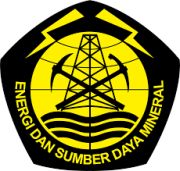JAKARTA — Indonesian Ministry of Energy and Mineral Resources (ESDM) on Wednesday co-organized the Clean Technology Roundtable Discussion at Hotel Raffles, Jakarta, in partnership with the Embassy of Denmark. The discussion was a part of the state visit of the Danish Prime Minister Lars Lokke Rasmussen to Indonesia.
“The partnership will have a great impact on the effective pricing of renewable energy in Indonesia,” said Rasmussen in his speech. “I really hope that the partnership will be executed immediately and be environmentally beneficial to Indonesia, Denmark, and even the world.”
ESDM Minister Ignasius Jonan stated that Indonesia’s commitment to achieve 23% energy mix derived from renewable energy by 2025 is clear. “Indonesia is absolutely committed to this target. So far, we have achieved 50% of the target, and will keep striving to accomplish the goal,” said Jonan.
In Denmark, wind energy contributes over 40% of the electricity consumed by the entire population, while in Indonesia, three large wind farm projects have just been initiated — two in South Sulawesi and one in South Kalimantan.
The wind energy feed-in tariff in Denmark is under US$4 cent/kWH for onshore energy, and under US$6 cent/kWh for offshore energy. “In Denmark, renewable energy not only can compete with fossil fuels in terms of tariff, but it can even go cheaper, even under US$4 cent onshore,” added Jonan.
Following the speech session, the representatives of PT PLN and Danish Energy Agency signed the MoU on Economic Modeling of Load Dispatch.
Indonesia-Denmark Partnership
Denmark is one of the most important partners for Indonesia in the renewable energy development sector. Both countries signed the MoU on the Clean, Renewable, and Conservation Energy Partnership on October 22, 2015.
In 2017, this partnership successfully launched Indonesia’s Wind Energy Potential Map – a map pinpointing the wind power potential for electrification.
Denmark is the perfect example of a successful country in renewable energy development, generating 42% electricity derived from wind energy in 2015.
For further information, please visit: https://www.esdm.go.id/.
